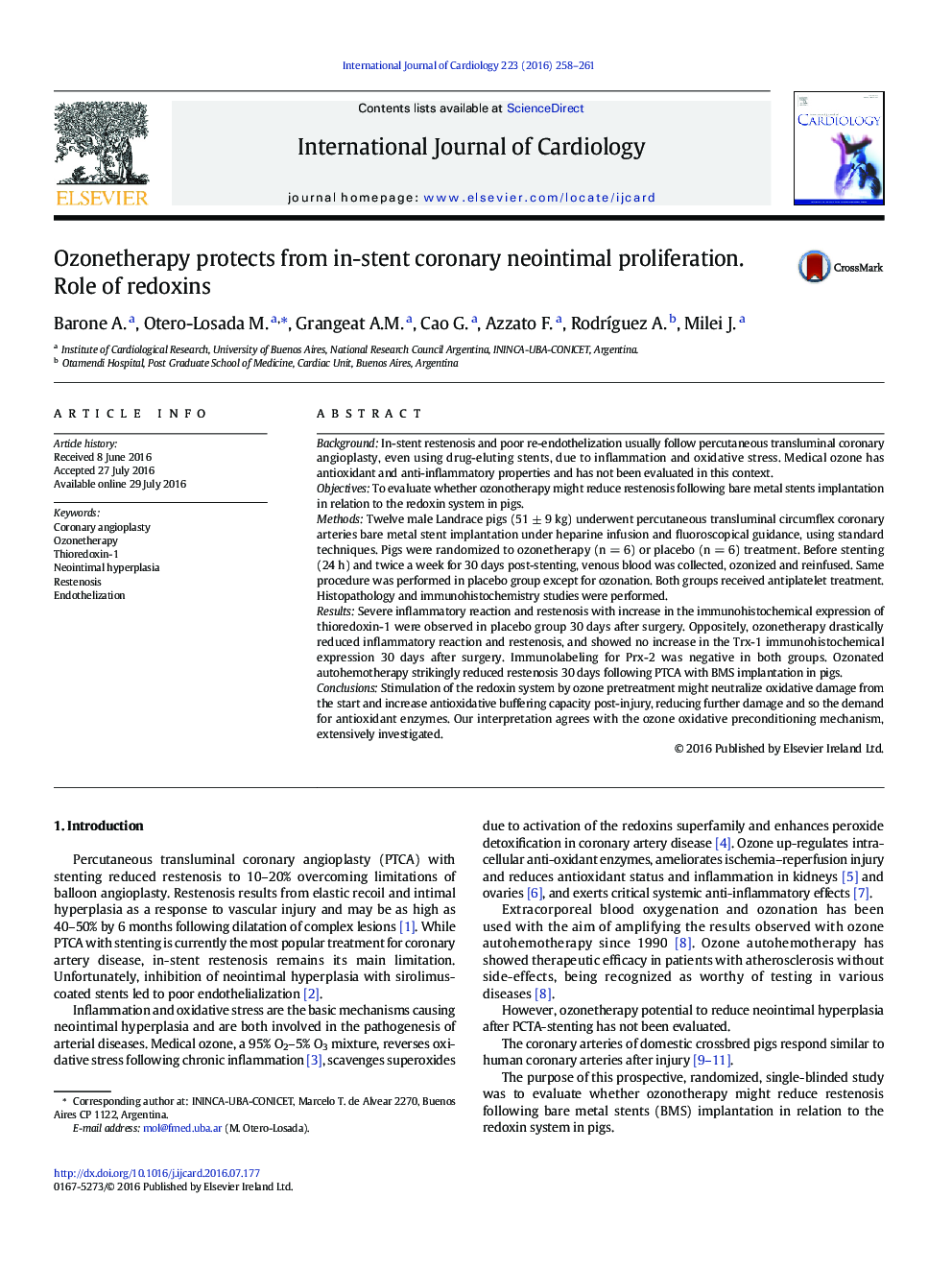| کد مقاله | کد نشریه | سال انتشار | مقاله انگلیسی | نسخه تمام متن |
|---|---|---|---|---|
| 5963108 | 1576125 | 2016 | 4 صفحه PDF | دانلود رایگان |

BackgroundIn-stent restenosis and poor re-endothelization usually follow percutaneous transluminal coronary angioplasty, even using drug-eluting stents, due to inflammation and oxidative stress. Medical ozone has antioxidant and anti-inflammatory properties and has not been evaluated in this context.ObjectivesTo evaluate whether ozonotherapy might reduce restenosis following bare metal stents implantation in relation to the redoxin system in pigs.MethodsTwelve male Landrace pigs (51 ± 9 kg) underwent percutaneous transluminal circumflex coronary arteries bare metal stent implantation under heparine infusion and fluoroscopical guidance, using standard techniques. Pigs were randomized to ozonetherapy (n = 6) or placebo (n = 6) treatment. Before stenting (24 h) and twice a week for 30 days post-stenting, venous blood was collected, ozonized and reinfused. Same procedure was performed in placebo group except for ozonation. Both groups received antiplatelet treatment. Histopathology and immunohistochemistry studies were performed.ResultsSevere inflammatory reaction and restenosis with increase in the immunohistochemical expression of thioredoxin-1 were observed in placebo group 30 days after surgery. Oppositely, ozonetherapy drastically reduced inflammatory reaction and restenosis, and showed no increase in the Trx-1 immunohistochemical expression 30 days after surgery. Immunolabeling for Prx-2 was negative in both groups. Ozonated autohemotherapy strikingly reduced restenosis 30 days following PTCA with BMS implantation in pigs.ConclusionsStimulation of the redoxin system by ozone pretreatment might neutralize oxidative damage from the start and increase antioxidative buffering capacity post-injury, reducing further damage and so the demand for antioxidant enzymes. Our interpretation agrees with the ozone oxidative preconditioning mechanism, extensively investigated.
Journal: International Journal of Cardiology - Volume 223, 15 November 2016, Pages 258-261